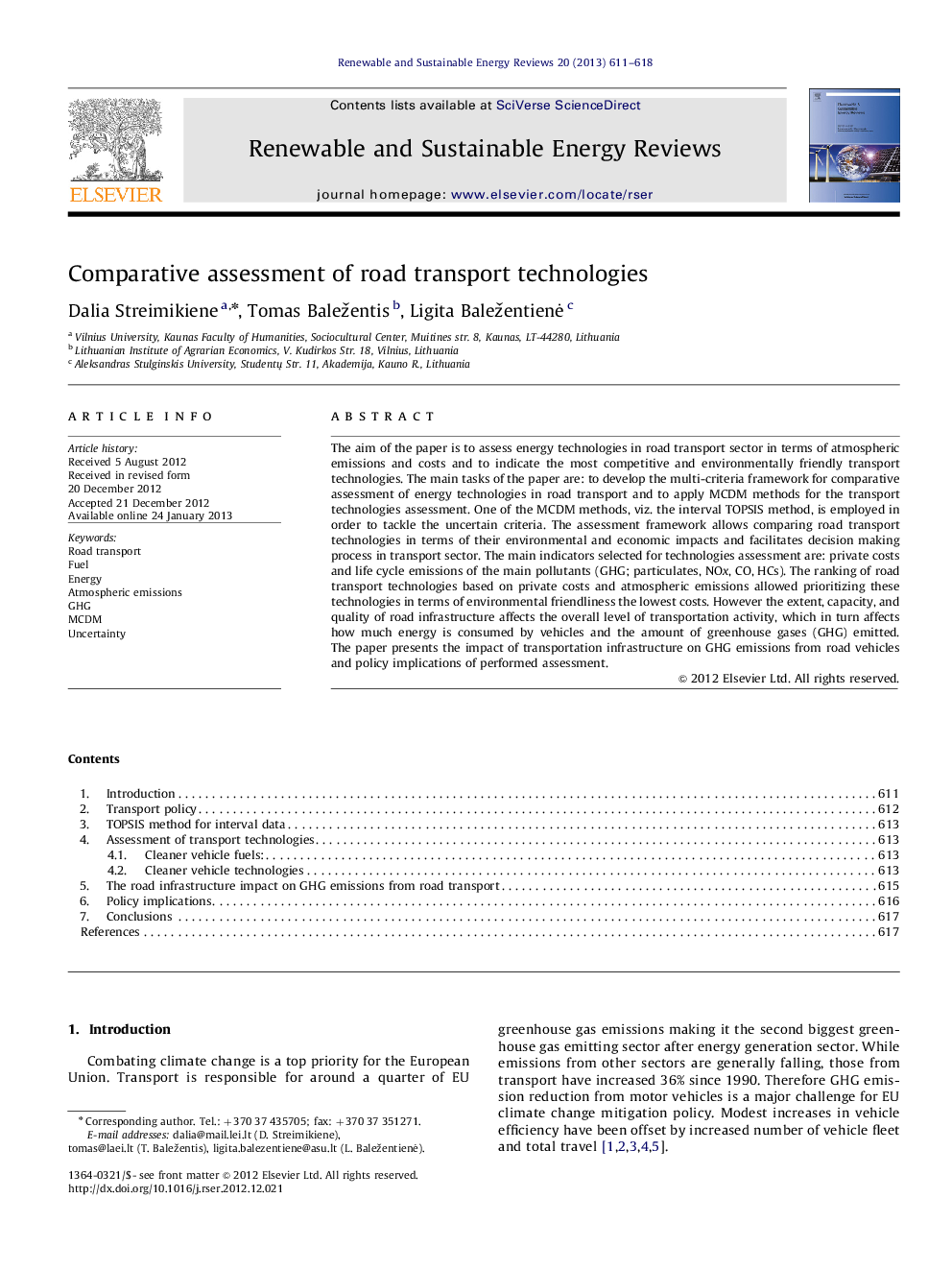| Article ID | Journal | Published Year | Pages | File Type |
|---|---|---|---|---|
| 8122449 | Renewable and Sustainable Energy Reviews | 2013 | 8 Pages |
Abstract
The aim of the paper is to assess energy technologies in road transport sector in terms of atmospheric emissions and costs and to indicate the most competitive and environmentally friendly transport technologies. The main tasks of the paper are: to develop the multi-criteria framework for comparative assessment of energy technologies in road transport and to apply MCDM methods for the transport technologies assessment. One of the MCDM methods, viz. the interval TOPSIS method, is employed in order to tackle the uncertain criteria. The assessment framework allows comparing road transport technologies in terms of their environmental and economic impacts and facilitates decision making process in transport sector. The main indicators selected for technologies assessment are: private costs and life cycle emissions of the main pollutants (GHG; particulates, NOx, CO, HCs). The ranking of road transport technologies based on private costs and atmospheric emissions allowed prioritizing these technologies in terms of environmental friendliness the lowest costs. However the extent, capacity, and quality of road infrastructure affects the overall level of transportation activity, which in turn affects how much energy is consumed by vehicles and the amount of greenhouse gases (GHG) emitted. The paper presents the impact of transportation infrastructure on GHG emissions from road vehicles and policy implications of performed assessment.
Related Topics
Physical Sciences and Engineering
Energy
Renewable Energy, Sustainability and the Environment
Authors
Dalia Streimikiene, Tomas Baležentis, Ligita BaležentienÄ,
